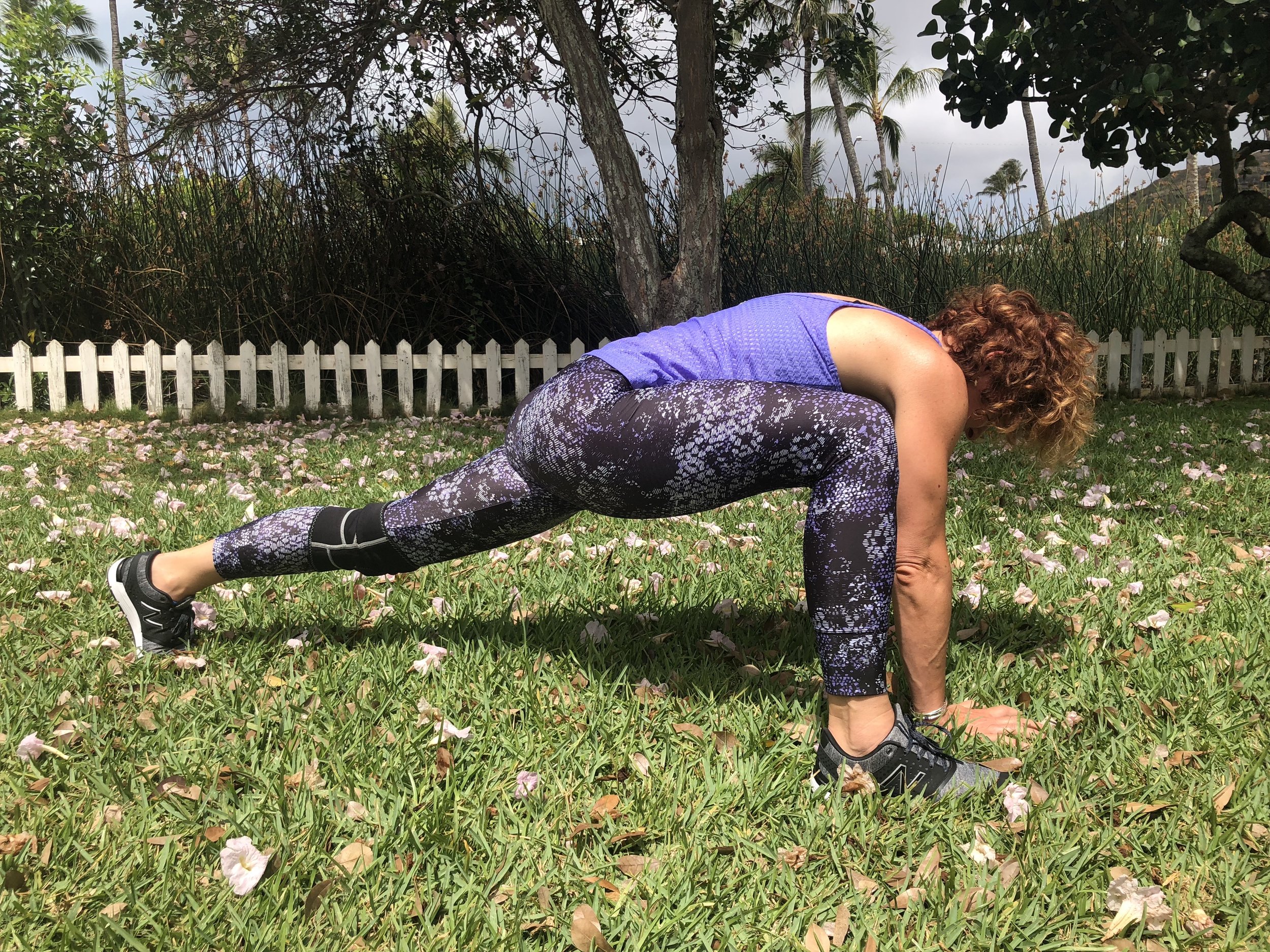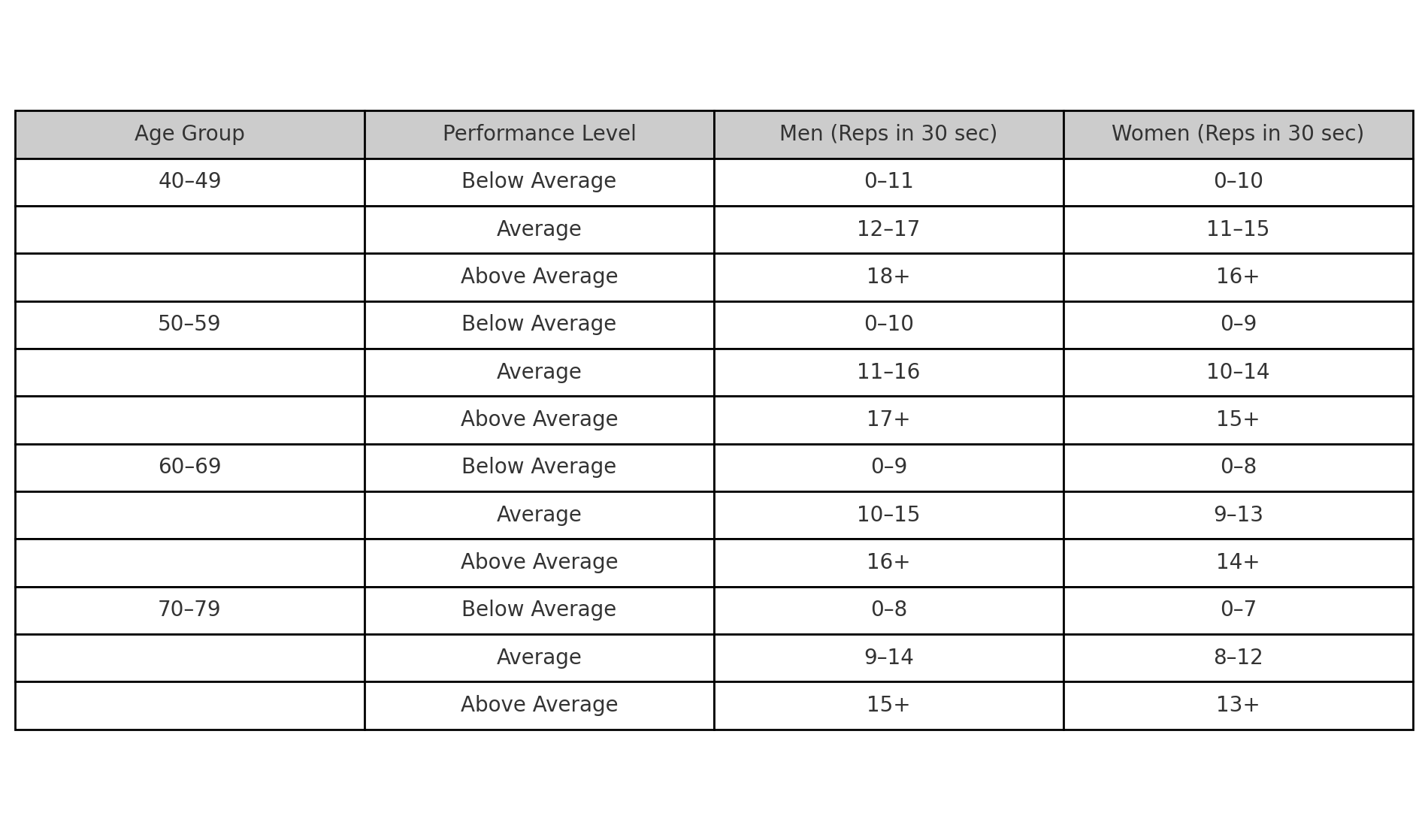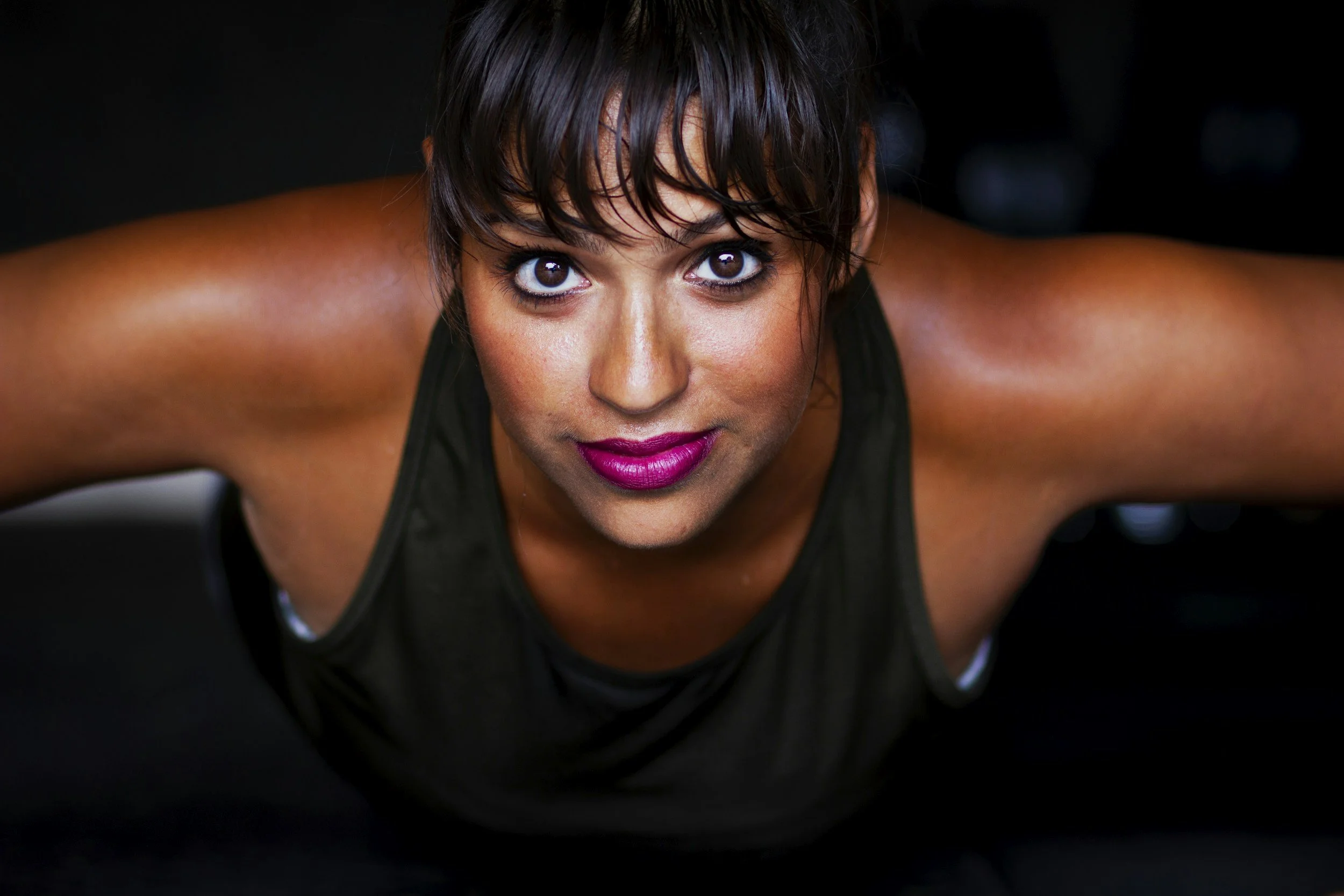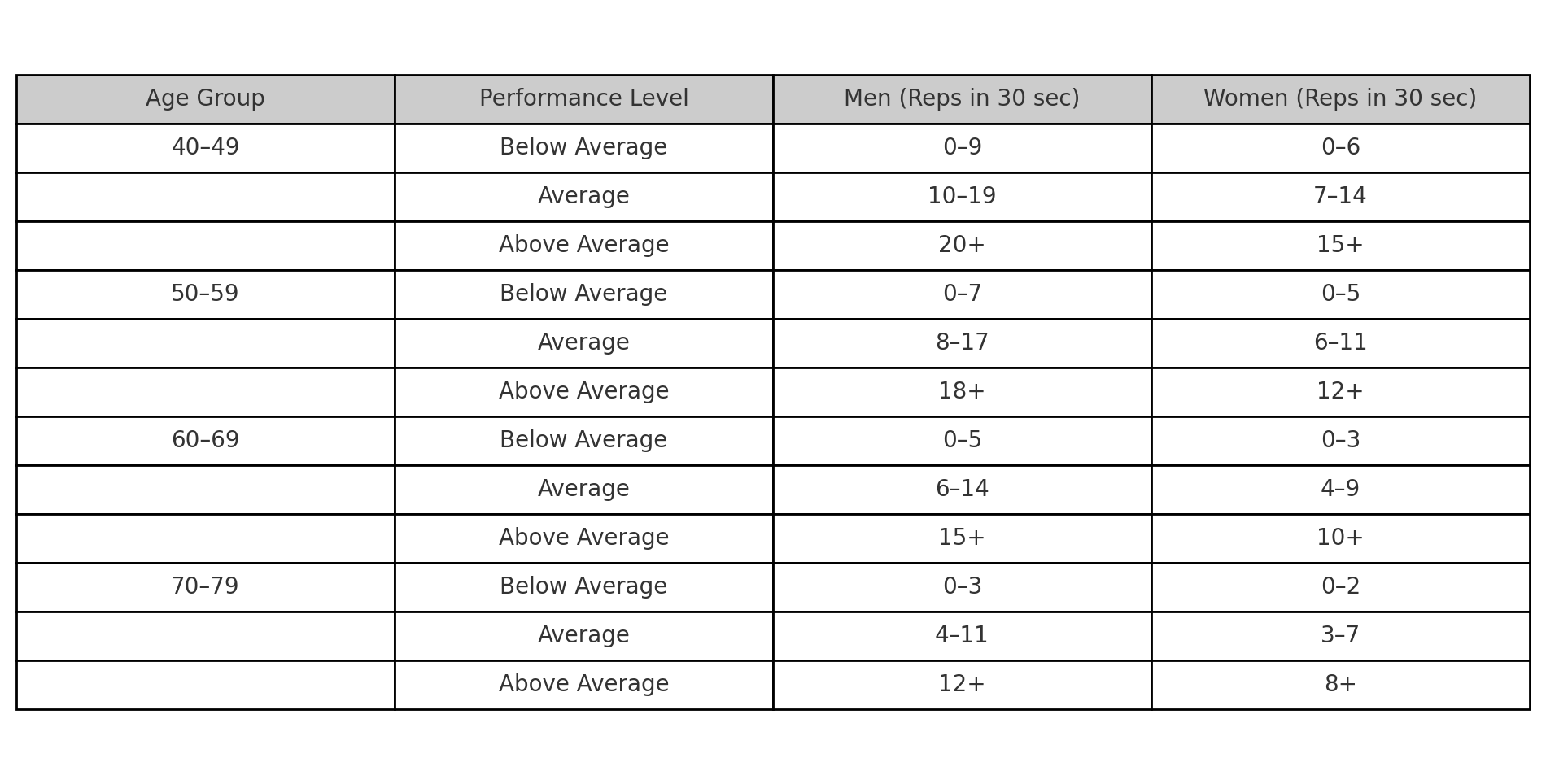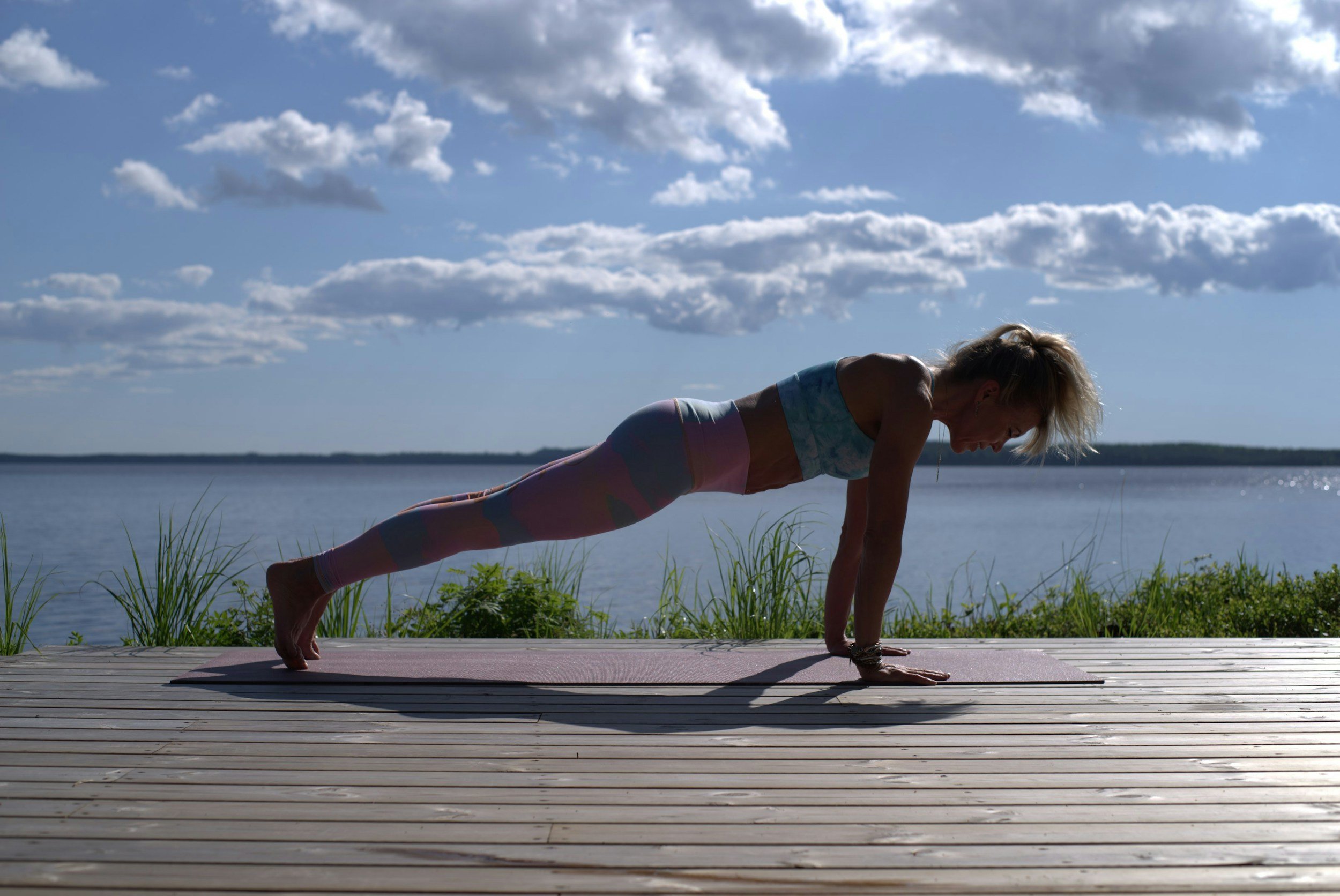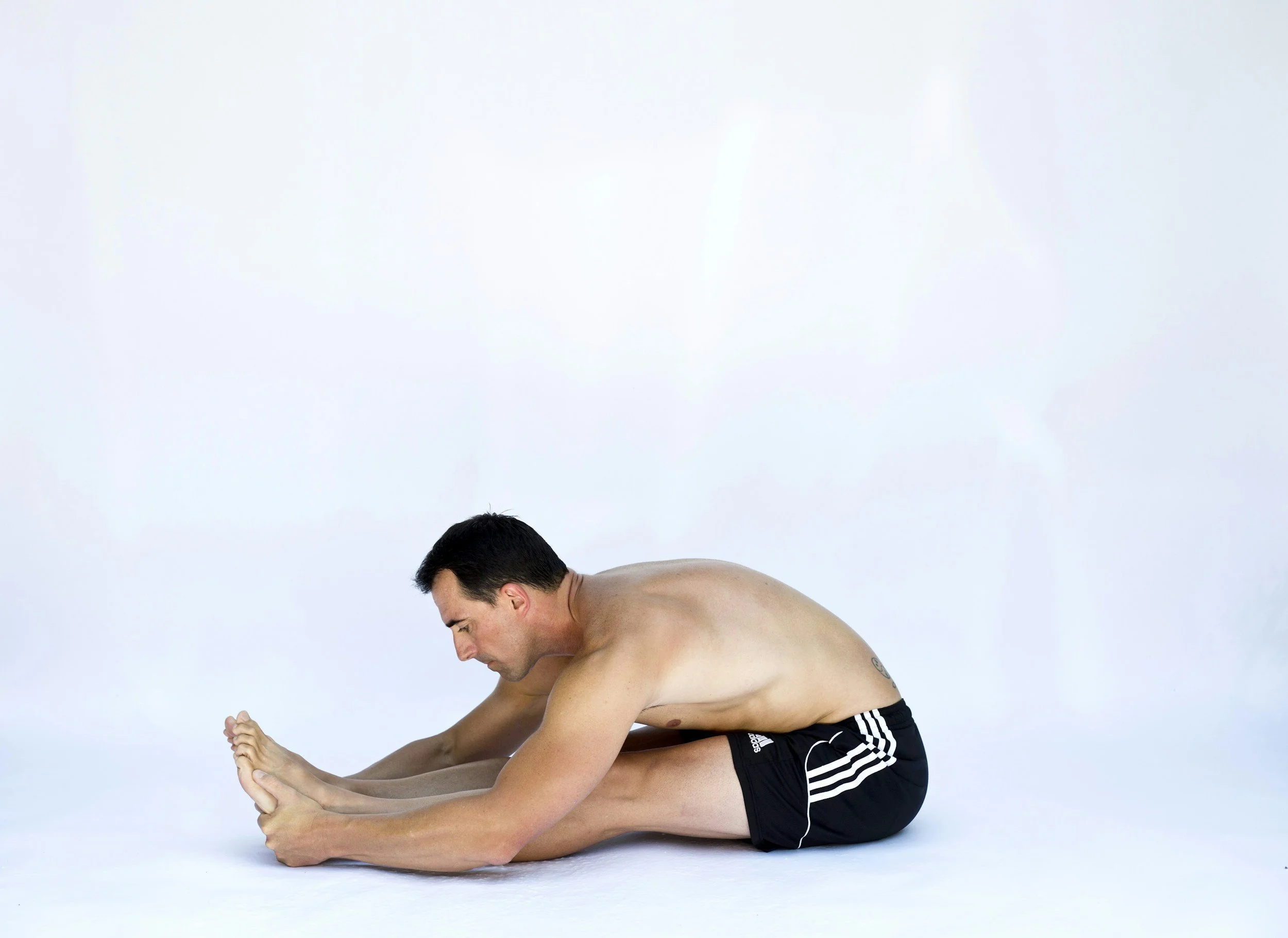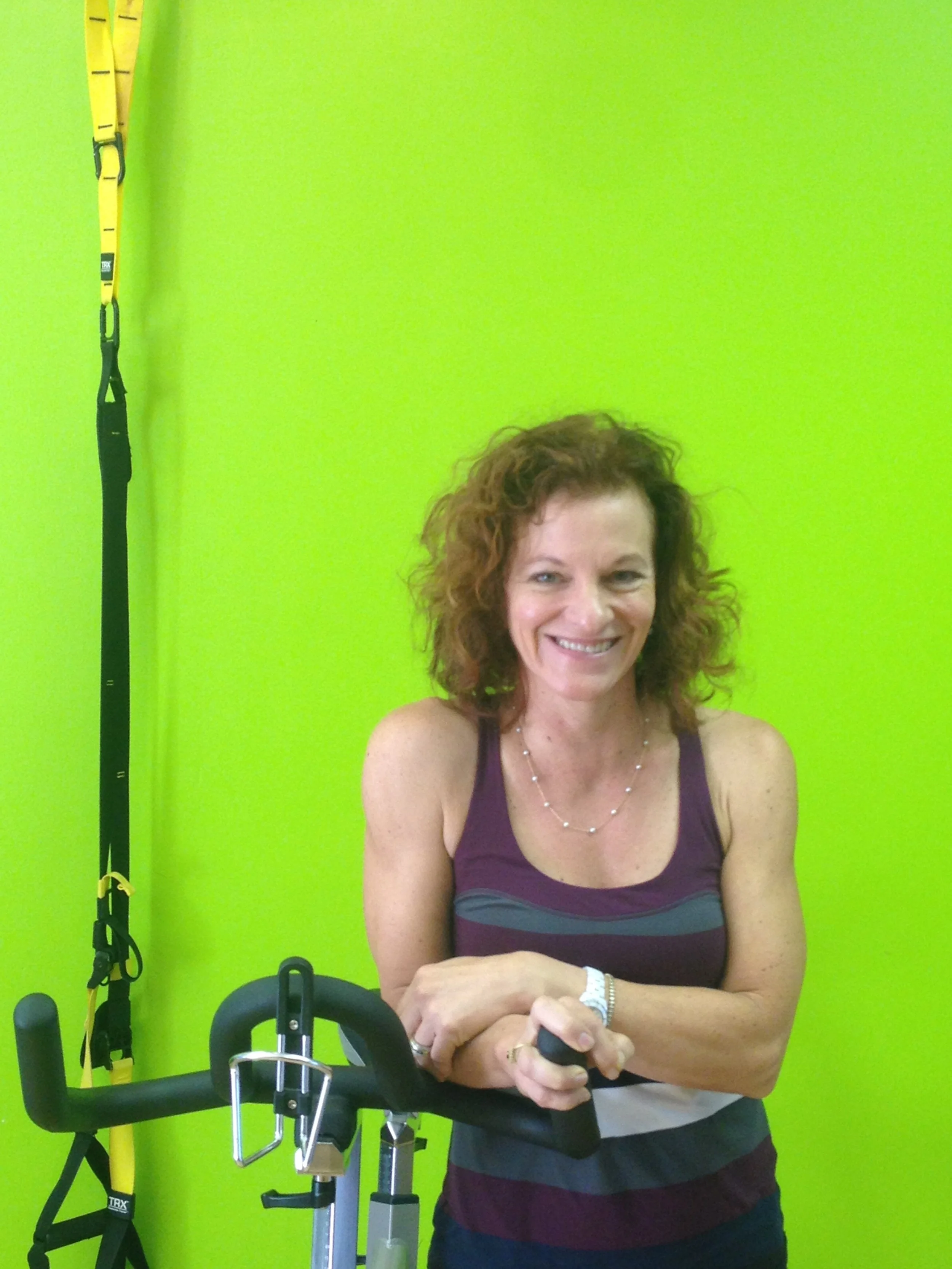Fitness Tests
How Well Is Your Body Really Working?
As we age, staying strong, flexible, and balanced isn’t just about fitness, it’s about maintaining independence, preventing injuries, and living life with confidence. That’s why we offer a series of simple, functional fitness tests to help you understand how your body is performing right now. These include strength and flexibility tests to assess how well your muscles and joints are working, balance tests to evaluate your stability and fall risk, and a neuromuscular (dual-tasking) test to see how your brain and body coordinate under everyday challenges.
Together, these tests give you a clearer picture of your current abilities and where to focus for improvement. Most importantly, they help support your health span, the number of years you live in good health, so you can continue doing the things you love with more ease, energy, and quality of life.
Know Your Baseline, Build Your Future
Strength, flexibility, balance, and brain-body connection
your vitality starts here.
Lower and Upper Body Strength Tests
Lower and upper body strength tests like the Sit-to-Stand, Modified Push-Ups, and Plank Hold are excellent because they reflect real-life functional movements that are essential for daily living. Together, they provide a well-rounded picture of overall muscular strength and endurance.
Sit-to-Stand Test: assesses leg strength and balance needed for getting out of chairs or climbing stairs.
Modified Push Up: measure upper body strength for lifting and pushing tasks.
Plank: tests core stability, which supports posture, balance, and injury prevention.
Sit and Stand
Equipment needed: Chair and a timer
How to:
Set timer for 30 seconds.
Use a standard chair (about 17–18 inches high) placed against a wall for stability.
Sit in the middle of the chair with your arms crossed over your chest and feet flat on the floor, shoulder-width apart.
When ready, start timer for 30 seconds.
Count how many times you can stand up to a full standing position and sit back down with control in 30 seconds.
Use only your legs — no pushing off with hands or arms.
Sit to Stand Test: This test evaluates a person's ability to transition from a seated position to a standing position. It assesses lower body strength, balance, and the functional capacity to perform everyday activities like getting out of a chair.
Results & Interpretation
Modified Push- ups
Modified Push-Ups test upper body strength which is important for daily tasks like carrying groceries, pushing doors, lifting objects, and maintaining posture.
Equipment needed: A yoga mat or padded surface or wall, a timer
How to:
Start Position:
Begin on your hands and knees on the mat.
Walk your hands slightly forward and shift your weight so your body forms a straight line from your knees to your shoulders.
Place your hands slightly wider than shoulder-width apart.
Engage your core and keep your neck neutral.
Form Check:
Your hips should stay in line with your torso — avoid arching your back or pushing your hips too high.
Keep elbows at a 45-degree angle (not flared out wide).
Perform the Test:
Start the timer for 30 seconds.
Lower your chest toward the ground by bending your elbows, then push back up to the starting position.
Repeat as many full, controlled reps as you can in 30 seconds.
End the Test:
Stop when:
Time runs out
You can no longer maintain proper form
You feel any discomfort or pain
Record Your Results:
Count the number of correct reps completed in 30 seconds.
Compare your score to the age and gender-specific standards.
Plank
A plank measures core strength and endurance, specifically targeting the deep abdominal muscles, back, shoulders, and glutes. It’s a good functional test because a strong core supports posture, balance, and stability during everyday movements like bending, lifting, and walking. The plank is also low-impact, easy to modify, and provides valuable insight into overall muscular endurance and spinal stability, all essential for injury prevention and long-term mobility.
Equipment needed: A timer, a yoga mat or padded surface and a mirror
How To:
Start Position:
Lie face down on the mat.
Place your elbows directly under your shoulders, forearms parallel to each other.
Lift your body off the ground, balancing on your forearms and toes.
Form Check:
Keep your body in a straight line from head to heels.
Engage your core, glutes, and legs.
Avoid letting your hips sag or rise too high- you should feel this in your stomach, not your low back
Keep your neck neutral (gaze down, not forward).
Begin Timing:
Start the timer as soon as you are in proper form.
Hold the position as long as you can while maintaining good form and remember to breath
Stop the Test:
End the test when:
You lose form (hips drop or rise, shoulders collapse, etc.)
You feel pain or discomfort
You choose to stop due to fatigue
Record Your Time:
Note how many seconds you held the plank with proper form.
Compare your result to the age and gender-based standards.
Flexibility (Range of Motion) Tests
Testing upper and lower body flexibility is important because it helps identify areas of tightness or imbalance that can limit movement, cause discomfort, or increase the risk of injury. As we age, maintaining flexibility in the shoulders, hips, legs, and spine supports posture, mobility, and ease in everyday tasks like reaching, bending, or getting up from the floor. Regular testing gives you a clearer picture of how your body is functioning and where to focus to stay mobile, independent, and active.
Sit and Reach Test: assess how well you can bend forward from your hips.
Shoulder Flexibility Test: measures the shoulder mobility.
Hip Flexor Test: measures how tight your hip flexors are. Tight hip flexors affect posture, create muscle imbalances, reduce mobility and can cause low back pain and knee pain.
Want a structured flexibility program designed for your needs?
SIt and Reach
Sit and Reach Test measures the flexibility of the hamstrings, lower back, and calves, which are key muscle groups for posture, mobility, and injury prevention. It helps assess how well you can bend forward from the hips — an important movement for tasks like tying your shoes, getting up from the floor, or maintaining good walking mechanics. Limited flexibility in this area can contribute to lower back pain, poor posture, and a higher risk of falls or strains, especially as we age.
How to:
Sit on the floor with legs extended straight in front of you, feet hip-width apart, toes pointing up.
Reach forward as far as possible with both hands, keeping knees straight.
Measure how far past the toes the fingers reach (or how far short).
Results:
Above toes: Excellent
Touching toes: Good
2–4 inches short: Fair
More than 4 inches short: Needs improvement
Shoulder Flexibility Test
Shoulder Mobility Test helps identify any limitations in your shoulder joint’s range of motion, as well as muscle imbalances or tightness in the upper back, chest, and arms. It reveals how well your shoulders can move and function during everyday tasks like reaching overhead, fastening a seatbelt, or lifting objects. Poor shoulder mobility can lead to discomfort, posture problems, and increased risk of injury, while good mobility supports strength, stability, and ease of movement.
How To
Stand tall with feet hip distance apart.
Reach one arm over the shoulder and one behind the back, trying to touch the fingers.
Repeat on the other side
Result
Fingers touching or overlapping: Good
Fingers almost touching (within 2 inches): Fair
Large gap: Needs improvement
Hip Flexor Test
Hip Flexor Test helps assess the flexibility of the muscles at the front of your hip, which play a key role in walking, standing, and maintaining proper posture. Tight hip flexors can limit your range of motion, contribute to lower back pain, and affect balance and alignment.
How to do it:
Lie back on a flat surface, pull one knee toward the chest and let the other leg relax.
If the lowered leg stays flat and the knee bends 90 degrees, hip flexor flexibility is good.
If the leg lifts or the knee can’t bend: indicates tight hip flexors.
Want a structured flexibility program designed for your needs? Inquire here.
Dual-Task Balance Test (Cognitive-Motor Integration
Test Procdure
Stand in a semi-challenging balance position such as: tandem stance, single-leg stance, or standing on a foam pad
Hold this position for 30 seconds and observe swaying, stepping, or loss of balance
Record the time you can maintain balance (up to 30 seconds)
Step 2: Dual-Task Condition (Cognitive-Motor Integration)
Perform the same balance stance while doing a cognitive task, such as:
Counting backward by 3s from 100
Reciting alternating months of the year
Spelling a word backward
Naming as many animals or fruits as possible in 30 seconds
Continue balancing while speaking out loud
Record the time you can maintain balance while multi-tasking.
Results & Interpretation
No change or slight decrease (<10% drop in time)
→ Normal cognitive-motor integration (Good balance under dual-task conditions)
Moderate decrease (10-20% drop in balance time, more swaying, hesitation in speech)
→ Mild dual-task impairment (Brain struggles slightly to integrate motor and cognitive tasks)
Significant decrease (>20% drop in balance time or complete loss of balance)
→ High fall risk (Difficulty maintaining stability while processing information)
Strength and flexibility are more than just fitness goals — they’re essential tools for protecting your vitality, extending your health span, and living a life of freedom and confidence as you age. Whether you're lifting groceries, reaching overhead, or getting up from the floor, building muscle and maintaining mobility supports everything from joint health to brain function.
Perform daily tasks with greater ease and energy
Protect your joints, reduce stiffness, and improve posture
Prevent injuries and move with better alignment
Support your longevity by maintaining functional independence
Build the physical foundation for an active, purpose-driven life
Investing in your strength and flexibility today helps ensure you stay strong, capable, and vibrant for years to come.
customized plan options
Tap the “+” to learn more about each plan and find the one that’s right for you.
-
This all-in-one coaching experience is designed to support midlife vitality through a customized movement plan built just for you. Together, we’ll create a program that fits your goals, lifestyle, and needs—whether you’re working on strength, improving balance, increasing flexibility, or sharpening brain-body coordination.
What's Included:
Personalized weekly workouts tailored to your abilities and progress
Strength, mobility, and core stability training
Targeted balance and flexibility exercises to support joint health and freedom of movement
Brain-body coordination drills to enhance reaction time and neuroplasticity
Ongoing support, habit tracking, and video guidance through a private app
Flexible, sustainable, and built to help you move with confidence every day
$129 - core program membership
$159- core program membership and weekly check ins
-
Rebuild your strength. Regain your balance. Move with confidence.
This 12-week app-based program is designed specifically for midlife adults who want to move better, feel stronger, and support long-term vitality. Whether you're noticing changes in balance, flexibility, or strength—or just want a smarter way to stay active—this program gives you the structure, support, and personalization you need to thrive.Custom weekly training plan delivered through a private fitness app
2–4 workouts per week combining strength, balance, flexibility & neuro-based movement
Video-guided exercises with clear instructions and progressions
Integrated habit coaching (sleep, mobility, stress, movement)
Weekly check-ins via in-app messaging to keep you accountable
Progress tracking so you can see measurable gains
Adjustments as you go based on your needs and feedback
Bonus: Optional 15-minute kickoff call or video message
$349 – Full 12-week personalized coaching program via app or $129 for 3 months
Optional Add on: $49 for two virtual calls or feedback
-
Small habits, big results. Lifestyle Reset helps you build lasting routines around movement, sleep, stress, and nutrition—one simple step at a time. Stay consistent and supported as you create a healthier, more energized version of yourself. Weekly habit focus tailored to your goals
Progress tracking through the app
Motivational check-ins & reminders
Simple strategies to support consistency
Optional movement or mobility add-ons
$49/month with no cancelation fee
Not seeing what you want or you have question? Please click the button below, we’d be more than happy to get back to you and answer your questions!
